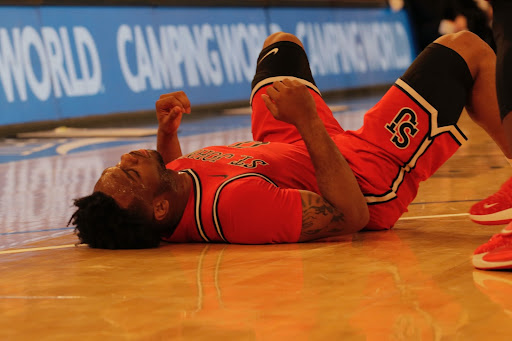St. John’s clearly does not set the benchmark for student involvement. Here, it often seems difficult to engage students and sustain excitement over athletics and other school sponsored activities. Sporting events are frequently poorly attended, workshops and lectures suffer empty seats, and school spirit can sometimes appear low.
So while some students choose to race off-campus after their last class or hide away in the confines of their dorm room, the administration of St. John’s has actively been trying to invigorate the community.
According the the St. John’s Web site, the newly introduced Most Valuable Participant Student Rewards Program is a dramatic example of the University’s desire to “increase school spirit and tradition while also creating excitement and attendance at all athletic events and division
wide Student Affairs programs.”
By attending events, students earn points on their StormCard which can in turn be used to earn prizes such as gift cards, an X-Box, or an iPod Touch. The program’s inception proves there is an attendance problem at many school related events.
At first glance, the reward program seems like a positive development. Students who already frequent campus events and activities will be rewarded for what they were already doing. This serves as a great way to retain these students’ interest and give back to them for their dedicated
attendance and school spirit.
For less enthusiastic students who don’t maintain a strong on-campus presence and who only attend events sporadically, this program may solidify their interest and lead to more permanent attendance. These students will likely appreciate the University’s effort to reward participation and school pride.
But there’s still a glaring problem. The numerous students who never participated on campus prior to the reward initiative may still not attend events, regardless of rewards for doing so. The reality is that the low attendance and mediocre spirit may be indicative of a deeper problem that the rewards program fails to account for: the possibility that the majority of these campus events, activities, and lectures are
simply poor quality.
People can be motivated with incentives and expensive prizes, but they can’t be expected to feel school spirit in exchange.
Student enthusiasm must be genuine in order to achieve long-term attendance, and this can only come from events that captivate and excite students. Furthermore, even if these prizes are used solely as a means to attract students, these events must not disappoint, or the entire purpose of attracting students will be futile.
When a guest speaker fails to draw a decent crowd, St. John’s should consider the circumstances. If there was a cost to enter the event, was it too much? Did the speaker seem unpopular with the student body? Was the event poorly advertised?
At athletic events, is the student crowd subjected to uncomfortable seating? At soccer games, for example, students are crammed onto metal bleachers behind the goals while the majority of priced seating remains empty: a contradictory view for watching a game that takes place horizontally on the field.
St. John’s is really trying with its MVP Student Reward Program, but it cannot be expected to solve its student involvement issues. While it may succeed in drawing a few new students to new events, only the events themselves can ultimately improve
the on-campus scene.
The University should examine the events that are taking place and focus their efforts on improving
the students’ experience.







